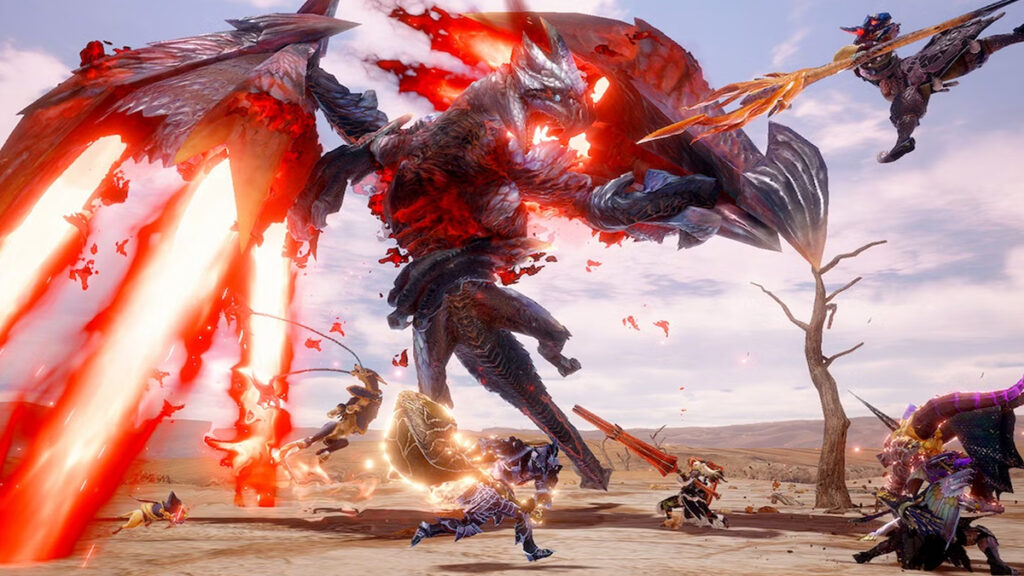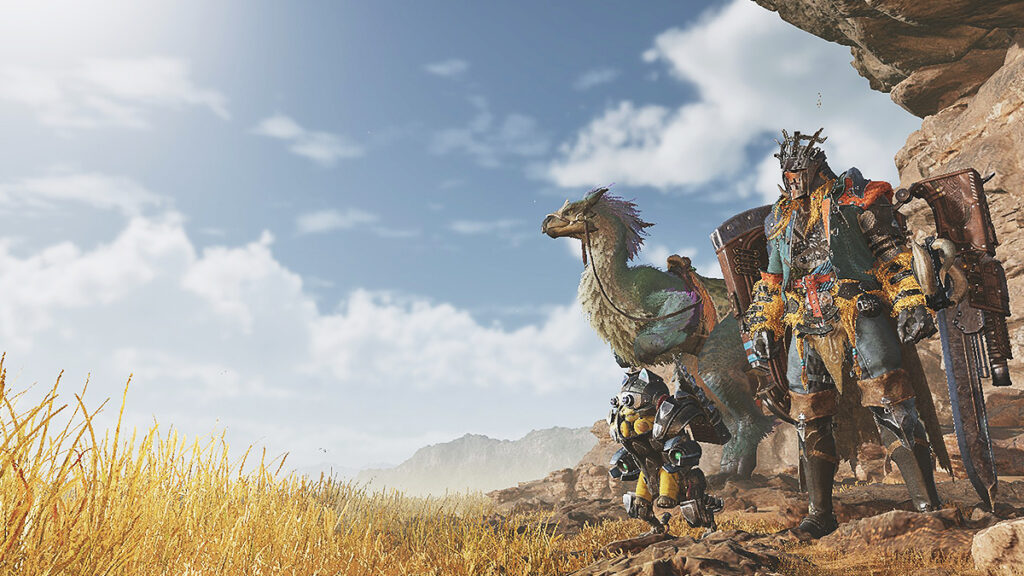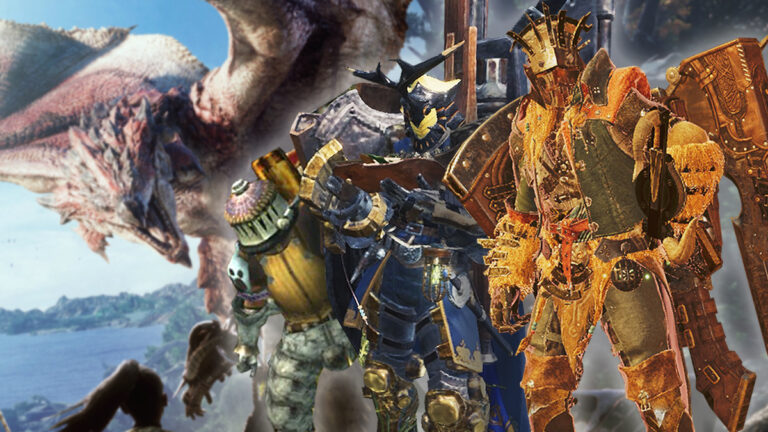Long story short: Monster Hunter is a game series I never knew I wanted. Growing up, I was always drawn to low fantasy settings — medieval worlds with grounded characters, limited magic, and an air of grit. Think Lord of the Rings, where Gandalf and Saruman’s otherworldly Maiar powers felt like the exception, not the norm. Meanwhile Aragorn, Gimli, and others still have to pull through using physical strength with swords, bows, and frying pans if needed.
Most medieval fantasy games though, they lean harder into high fantasy. In series like Elder Scrolls and Warcraft, magic flows freely. Basically, anyone can conjure fireballs and eventually barf rainbow-colored explosions with training. By the time I finished university and got my first job, I almost gave up on one of my elusive dream games… until I saw the PC trailer for Monster Hunter World.
I’m actually already familiar with the series’ name, as the result of years of flipping through pages of games magazine. I also had a very brief stint with one of the earlier entries but more on that later. While I can only stomach a couple dozen hours of exploring Skyrim even with mods, something else caught my imagination as I watched World’s 1 minute 24 seconds announcement video.
Monster Hunter captured something different than most other action RPGs: a grounded fantasy world where magic seems non-existent, and the focus is on human (and Wyverian) ingenuity. See that giant monster wreaking havoc? Tough luck, you cannot kill them as a spell-slinging wizard; grabbing oversized whacking sticks forged from monster parts is the only answer.

When something otherworldly does happen, it’s always tied to appearance of Elder Dragons. Beings so powerful and enigmatic that the Guild struggles to even call them anything else but ‘dragons.’ Even Fatalis, the penultimate final boss of the whole Monster Hunter world, is designed just like a generic dragon from fairy tales! This balance of groundedness and mystique is what turns my eyes into the series.
Then it stole my heart with its ‘one of a kind’ gameplay. The combat feels deliberate; every swing of your weapon requires commitment, especially in older titles like Monster Hunter 4 Ultimate. It’s deceptively simple — pressing two buttons is usually all it takes to attack — but mastering the timing, spacing, and combos is another story entirely. From the satisfying impact of King Attilart connecting with a Rathalos head to the way an enraged Nargacuga flies when you cut off its tail. It’s a game where animation plays a huge role of immersing you in.
In many ways, I think, it feels like a PVE fighting game. Your knowledge of weapon movesets and monster behaviors becomes a meta skill you carry across entries.
More than that, the art direction too, paired with the incredible soundtracks by Capcom Sound Team, elevates the experience. Each game generation immerses you in the life of a hunter among the locals in a remote fantasy village. I’ll always have a soft spot for Freedom Unite’s Pokke Village theme and Tri’s To One with Life despite playing them years after their debut.
Despite its gameplay loop – beating up giant wildlife repeatedly for mere worldly needs like gear upgrades — it never feels cruel. The series is careful to portray hunting as a necessity, not brutality. I mean, how else can we save Moga Village and its community unless we fend off the rampaging Ceadeus? Also note that repeating the same quest over and over for that coveted Plate is obviously not canon. Then when the Proof of a Hero kicks in during a climactic quest, your heroism completely shines through.
I’m not a veteran of this series by any means. As mentioned before, my journey started with an earlier game in the series: Monster Hunter Tri on the Wii. But my console broke after a couple of tutorial quests and I practically memorized it until World. That game is when I finally wasted a minimum of 1,833 hours of my life on the series. Then, while waiting for Sunbreak, I went backward and tackled older releases. Beating Amatsu in Portable 3rd, getting humbled by Freedom Unite stricter controls and 3U’s underwater combat, and breaking through G Rank in GU and 4U. It opened my eyes that each game had its quirks — both brilliant and frustrating.
Capcom doesn’t always nail moving forward from one generation to the next. Eliminating Great Sword and Switch Axe’s ability to throw people away, which can be utilized as a makeshift mounting attack or evading move, is regrettable. They’ve streamlined the skill system to a fault, sometimes making skill stacking too powerful and overwhelming. Removing the Blademaster/Gunner distinction hurt variety, even with Alpha/Beta gear replacements.
While some quality-of-life changes, like healing without the iconic flex pose, are appreciated, they’ve altered the games’ combat flow (and comedy) in ways I miss. Cooldown and bar-based supermoves in Generations and Rise were fun but doesn’t fit with the spirit of the world. And those are the only obvious issues that a non-veteran can immediately recognize!

That said, I can’t help but be optimistic about the future of this series. Despite performance issues, Monster Hunter Wilds’ open world has me excited to see where the series goes next (bring back underwater again please). I’m wondering if the team would bring back and rework spinoff weapons like Tonfa, Magnet Spike, and Accel Axe as well. I’d love to see them embrace innovations from other games like Freedom Wars‘ body part destruction system, which made monsters more aggressive and less predictable.
Simply put, monster hunting is a one of a kind experience. A mix of deliberate combat, immersive worldbuilding, and a soundtrack that makes every hunt unforgettable. No matter which entry you start with, it’s never too late to pick up a Monster Hunter game.
